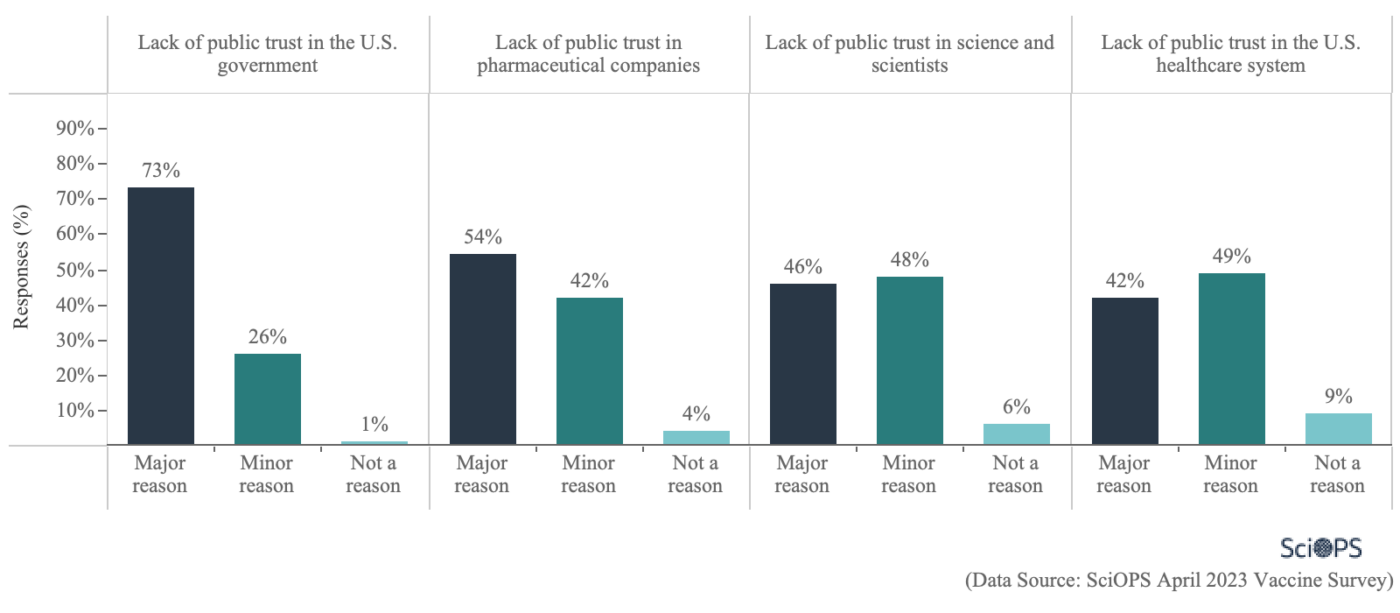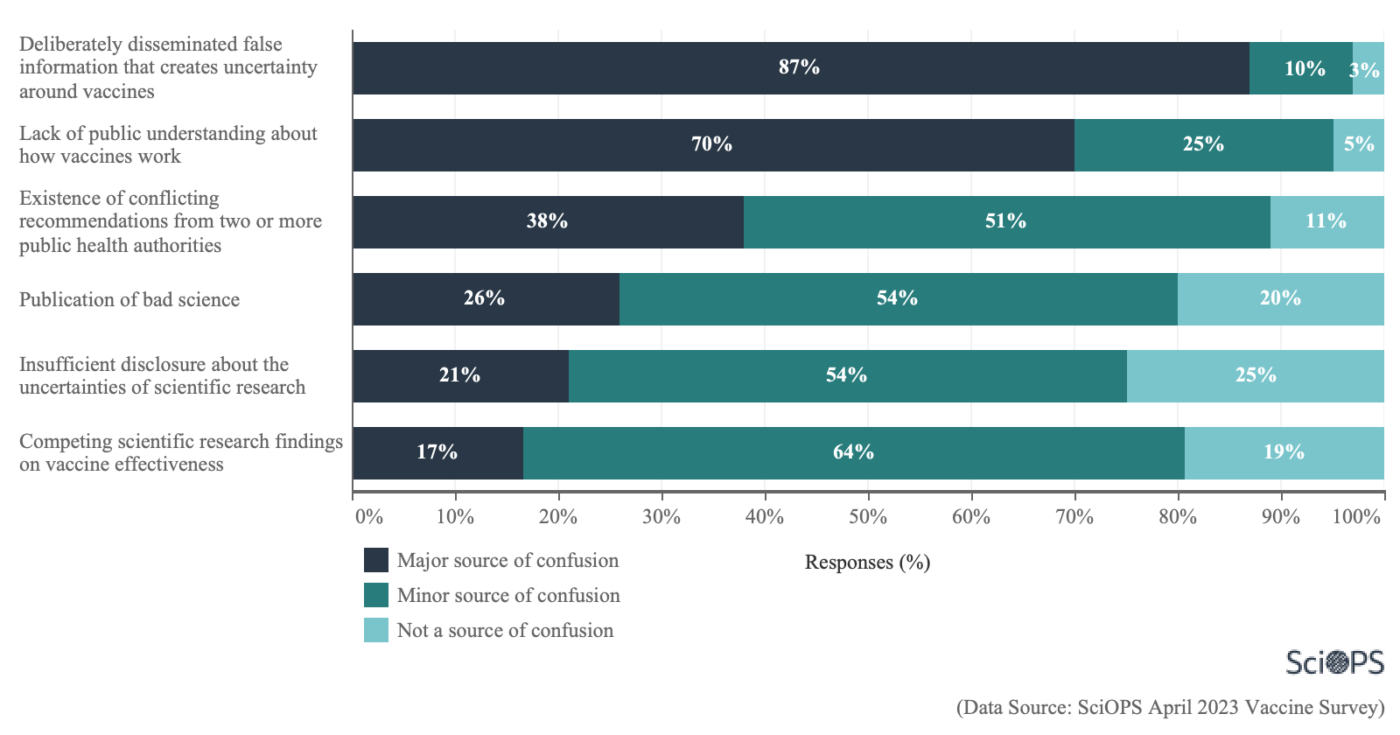Vaccine Survey: Scientists' Views on Reasons for Declining Vaccination Rates and Public Confusion
The survey sample was weighted by gender and academic field to represent the population as closely as possible. The measure of sampling error for questions answered by the full sample is plus or minus 5 percentage points.
In this survey, we asked scientists various questions on vaccine controversy, trust in science, causes of vaccine hesitancy, preferred policy and regulatory approaches, risk perceptions, and scientists’ ethics and perceived communication roles.
Question

Finding
A majority of scientists responded that lack of public trust in the U.S. government (73%) and in pharmaceutical companies (54%) are major reasons for declining vaccination coverage.
Less than half of the scientists responded that lack of public trust in science (46%) and the U.S. healthcare system (42%) are major reasons for declining coverage.
Subgroup analyses of gender show that female scientists are more likely to believe that lack of public trust in pharmaceutical companies is a reason for recent declines in vaccination coverage (mean difference = 0.18, t=2.7, p<.01).
Question

Finding
Most scientists believe that deliberate dissemination of false information (87%) and lack of public understanding (70%) are the major sources of public confusion.
More than one-third (38%) also believe that conflicting recommendations from public health authorities are a major source of public confusion.
Respondents reported that publication of bad science (26%), insufficient disclosure about the uncertainties of scientific research (21%), and competing scientific research findings regarding vaccine effectiveness (17%) are major sources of public confusion.
This national survey on academic scientists in the US was conducted by the Center for Science, Technology and Environmental Policy Studies (CSTEPS) at Arizona State University. The survey was approved by Institutional Review Boards at Arizona State University.
The sample for this survey was selected from our SciOPS panel. The SciOPS panel is recruited from a random sample of PhD-level faculty in four fields of science. Contact information of faculty in the fields of biology was collected from randomly selected Carnegie-designated Research Extensive and Intensive (R1) universities in the United States (US). Contact information of faculty in the field of public health was collected from all CEPH accredited public health schools. The full sample frame for recruiting the SciOPS panel includes contact information for 9649 biology and public health faculty. 831 eligible biology and public health faculty consented to become SciOPS panel members, representing AAPOR recruitment rate (RECR) was 8.8%.
This national survey obtained a total of 316 usable responses, representing an individual survey completion rate of 38% and an AAPOR Cumulative Response Rate (CUMRR) of 3.3%.
Survey Description
Sample weighting and precision: The sample of respondents for this survey was weighted by the inverse of selection probabilities and post-stratified probabilities by gender, academic field and academic rank to represent the full sample frame for recruiting SciOPS panel members as closely as possible. A conservative measure of sampling error for questions answered by the sample of respondents is plus or minus 5 percentage points.
